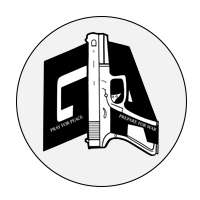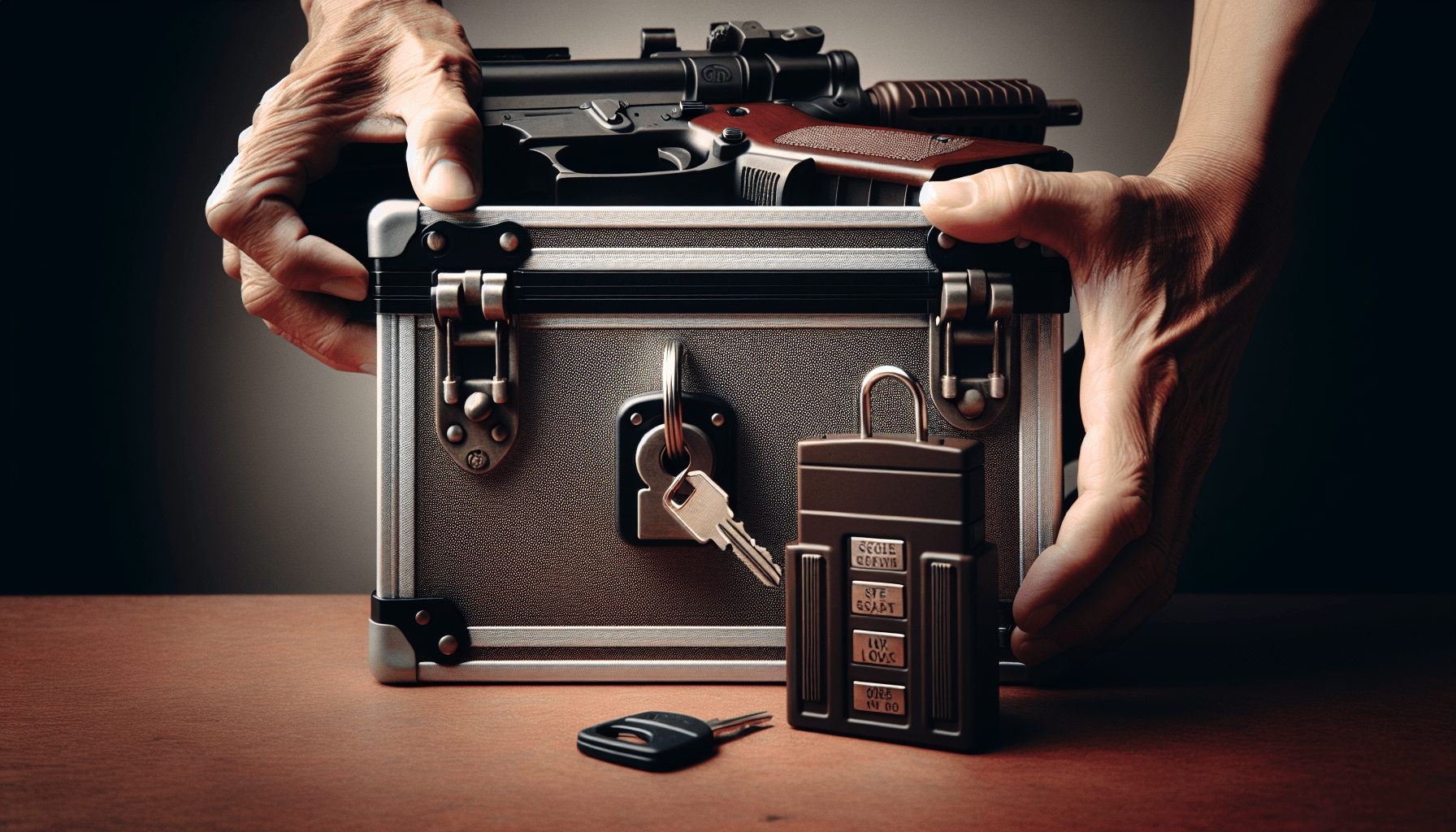Have you ever wondered how to introduce firearms to children safely? It’s a subject that can certainly spark a wide range of discussions, from concerns about safety to rights and responsibilities. Introducing children to firearms is not only about teaching them how to shoot but also about fostering a deep understanding of safety, respect, and responsibility. At Green Line Arms, we understand these concerns and aim to provide a comprehensive guide to help you navigate this process thoughtfully and safely.
Why Consider Introducing Firearms to Children?
The idea of introducing firearms to children might seem intimidating at first. However, education and proper training can significantly reduce the risks associated with firearms. When done responsibly, it helps demystify guns and emphasizes safety. Moreover, considering that children might encounter a firearm at some point in their lives, having prior knowledge could potentially prevent accidents.
Age Appropriateness: When Is the Right Time?
Determining the right age to introduce a child to firearms is crucial. There’s no one-size-fits-all answer, as it largely depends on the child’s maturity level, understanding of safety protocols, and interest in learning about firearms.
Early Childhood (Ages 4-7)
At this tender age, kids are like sponges, absorbing information rapidly. While it’s too early for hands-on training, it isn’t too early to introduce the concept of gun safety.
- Basic Safety Rules: Explain the importance of never touching a firearm without adult supervision.
- Demystifying Firearms: Give them a basic understanding that firearms are tools, not toys.
Middle Childhood (Ages 8-12)
Children in this age group are better at grasping complex concepts and following instructions. If your child has shown interest and demonstrates responsible behavior, you can advance their education.
- Hands-on Training with Airsoft Guns or BB Guns: These types of firearms are less dangerous and can teach essential handling skills.
- Understanding Functionality: Teach them how guns work, emphasizing the mechanics and the serious impact of firing a real weapon.
Adolescence (Ages 13+)
By this age, many adolescents are capable of handling more mature topics and can begin more structured training.
- Supervised Range Visits: Start with a lower caliber firearm under strict supervision.
- In-Depth Training Programs: Enroll them in safety courses and structured shooting classes to enhance their skills and understanding.

The Fundamentals of Firearm Safety
Emphasizing the fundamentals of firearm safety is the cornerstone of introducing children to firearms. At Green Line Arms, we recommend following these essential rules:
The Four Primary Rules of Gun Safety
| Rule | Description |
|---|---|
| 1. Treat every gun as if it’s loaded | Always assume that a firearm is loaded, even if you believe it is unloaded. |
| 2. Always keep the gun pointed in a safe direction | Never point the muzzle at anything you do not intend to destroy. |
| 3. Keep your finger off the trigger until you’re ready to shoot | Only place your finger on the trigger when you have a clear target and are ready to fire. |
| 4. Be certain of your target and what’s beyond it | Ensure that you know exactly what your target is, as well as the area beyond your target. |
These rules are non-negotiable and must be reiterated consistently to ensure that safety becomes second nature.
Practical Steps for Teaching Firearm Safety
Use Appropriate Language and Analogies
Children, depending on their age, may have trouble understanding technical jargon. Simplify concepts and use analogies that they can relate to. For instance, compare handling a firearm responsibly to riding a bicycle: both require practice, understanding, and adherence to rules.
Start with Non-Lethal Weapons
Before allowing a child to handle a real firearm, it can be beneficial to start with non-lethal options. Airsoft guns or BB guns provide a practical introduction without the same level of risk involved.
Demonstrate First, Then Supervise Closely
Show them how it’s done before letting them try. This visual learning helps them understand the correct methods and the importance of safety. Always supervise closely, providing guidance and correction as needed.
Use Proper Gear
Safety gear such as ear protection, eye protection, and appropriate clothing should be mandatory. This not only protects them but also drives home the importance of safety measures.
Create a Safe, Controlled Environment
Initially, the shooting environment should be as controlled as possible. A private range with minimal distractions helps keep the focus on learning and safety.

The Importance of Continuous Education
Teaching children about firearms is not a one-time lesson but an ongoing process. Regular practice, safety drills, and advanced courses ensure that the child’s understanding deepens over time.
Advanced Training
As they grow older and more competent, consider enrolling your child in advanced training programs. Green Line Arms offers highly-rated courses that cover various aspects of firearms and safety, designed to cater to all experience levels.
Regular Safety Reviews
Children—and adults—can benefit from periodic reviews of fundamental safety rules. This repetition helps reinforce crucial points and keeps safety protocols fresh in their minds.
Real-Life Scenarios
Using interactive and realistic simulations can be a highly effective teaching tool. At Green Line Arms’ virtual shooting range, we provide cutting-edge simulation experiences that prepare attendees for real-life situations, fostering both skill and responsible behavior.
The Role of Respect and Responsibility
Beyond practical skills and safety measures, teaching children about firearms involves instilling respect and a strong sense of responsibility.
Respect for Firearms
Understanding the power and potential consequences of using a firearm is essential. Impressions of guns from movies and video games can be distorted; it’s crucial to reinforce that real firearms are not toys and their misuse can have severe outcomes.
Accountability
Children should understand that handling firearms involves a series of responsibilities. Reiterate that respect for the rules and guidelines is non-negotiable. Being accountable for their actions around firearms will contribute to a safer environment for everyone.
The Role of Role Models
Children learn a great deal from observing the behaviors and attitudes of adults. As a parent or guardian, demonstrating safe and responsible firearm practices is essential.
Your Actions Matter
Always follow safety protocols yourself. Your child is more likely to mimic what they see rather than what they’re told.
Honest Conversations
Engage in open dialogues about why specific rules are in place and discuss any questions they might have. Building trust through honest communication helps reinforce their understanding and respect for firearms.
Resources and Training at Green Line Arms
At Green Line Arms, we are committed to promoting responsible gun ownership and safety. Our shop and virtual shooting range offer a variety of resources and experiences to help you and your child learn about firearms in a secure and educated manner.
Training Programs
Our advanced training programs cover a range of topics, including basic handling, advanced tactical skills, and safety protocols. Whether you are a beginner or an experienced enthusiast, our courses are designed to cater to all skill levels.
Virtual Shooting Range
Experience our state-of-the-art virtual shooting range that offers realistic scenarios to enhance your training in a safe and controlled environment. It’s a fantastic way to practice skills and learn new techniques without the risk associated with live fire.
Expert Advice
Our knowledgeable staff are always available to provide tips, share their expertise, and guide you in choosing the right firearms and accessories to suit your needs.
First Responder Medical Tips
In addition to firearm training, understanding basic first responder medical tips is crucial. Accidents, while rare, can happen, and being prepared can make all the difference.
Basic First Aid Skills
Ensure that both you and your child are familiar with basic first aid skills. This includes knowing how to stop bleeding, performing CPR, and handling shock.
Emergency Contacts
Always keep a list of emergency contacts easily accessible. Teach your child how to call for help in case of an emergency and ensure they know your location and specific instructions to give first responders.
Conclusion
Introducing children to firearms involves a balanced approach of education, safety, respect, and responsibility. By understanding the appropriate age to start, emphasizing the fundamentals of safety, and engaging in continuous education, you can foster a safe and responsible environment for your child.
Your role as a responsible adult and role model cannot be overstated. Transparency, active supervision, and leading by example are critical components of this educational journey. At Green Line Arms, we are dedicated to helping you navigate this process with our advanced training programs, state-of-the-art virtual shooting range, and expert advice.
For all your firearms and first responder medical tips, visit us at Green Line Arms. Together, we can create a safer and more knowledgeable community. Remember, PRAY FOR PEACE – PREPARE FOR WAR.




